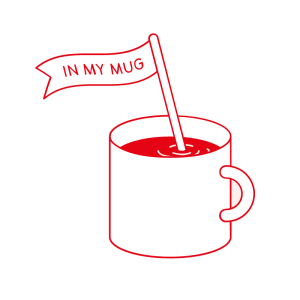
Episode 354 on Monday the 24th of August 2015 Costa Rica Finca Arbar El Oasis Red Honey Caturra
 2015-08-23
2015-08-23
This is the third year of us having this coffee, and we are finding out more about the farm piece by piece. When we first found it in 2013 we had very little information on the farm; so much so that it didn’t even have a name!
I've been lucky enough to visit the farm on my trips to Costa Rica, and over the past 2 years I've found out lots more and also built a stronger relationship going forwards. Let me tell you what I know so far...
I first got to meet Carlos in 2013, at the exporter's office on the last day of my visit in Costa Rica. He arrived around 10 minutes after I had cupped the first table of coffees, where I had found one lot that was making me sing. It just had to be his coffee.
Here ensued the worst negotiation ever to take place for buying coffee.
"How much do you want?" I asked.
He replies, "How much do you like it?"
"A lot,” I say.
"I'd like a lot then, please," Carlos says.
"OK..."
Luckily at this point a grown-up from the exporter's office stepped in and made sure I didn't give Carlos my house, car and pension plan. We agreed a price that rewarded Carlos more than he had ever gotten before and left me with a home to return to in Stafford.
Back then this coffee was just called Carlos Arietta, because that was all we knew about it.
Last year on my return visit I got to spend some time with the family. I stopped for some lunch, hung out and asked lots of questions. First of all there's the mill, which is called Arbar, which is very close to the house. Here they have drying tables and a small nursery. They didn't have a deplulper, but more about this later. The mill is new; before they would just sell their coffee to the local coop and so have no interaction with the coffee.
Then I found out that they own two small farms, this one being El Oasis, which provided the coffee we bought in 2013. The farm is located in the Western Valley region near to the town of Lourdes de Naranjo. It's located at 1,600 metres above sea level and contains mostly Caturra, and a tiny bit of Villa Sarchi, with plans to plant some small micro lots in the future. The farm produces between 700–1,400 KG a year.
Carlos runs the farm with his wife and his children, Maria Isabel, Yesica, Karen, Stephen and Jose Ignacio. He has owned this farm for 15 years but only started processing the coffee himself in 2014 (while still paying someone to pulp it for him — more on this later). He hadn't been able to present his coffee to a buyer previously, so he would send it to the exporter we use in Costa Rica.
Last year you may remember that the coffee was priced a little differently; our normal, nicely rounded-down price was not there. The coffee should have been sold for £7.50 (we negotiated a small price drop from the previous year because we bought everything from both farms, and this works out that there are some economies of scale compared to the £10.00 of 2013), but we charged £7.88. Well, this was so that we (by “we” I mean “you”) could buy Carlos and his family a depulper for his next harvest. This meant he didn’t have to pay someone else to pulp his coffee, and he could gain more control of his amazing coffee.
You can go and see what your generosity bought: I lent the money to Carlos because I promised you would pay it back (and you did!) at the blog post here.
This year one of my roasting team, Roland (of “Roland's Daft Fact” fame), travelled to Costa Rica to be on the jury for their Cup of Excellence competition. If you ever wondered what a coffee roaster from the UK would get up to if let loose in Costa Rica, then you should have a read about his trip in Roland Glew's Costa Rican Adventure.
In the cup it's like someone has slipped in a big glug of 5 Alive Tropical Hit fruit juice. It's all peachesand pineapples, with a really complex but delicious fruit sweetness.
- Country: Costa Rica
- Region: Western Valley
- City: Lourdes de Naranjo
- Farm: El Oasis
- Farmer: Carlos Arrieta
- Micro Mill: Arbar
- Altitude: 1,600 m.a.s.l.
- Varietals: Catuai, Caturra and small amount of Villa Sarchi
- Processing System: Red honey
More Episodes
Create your
podcast in
minutes
- Full-featured podcast site
- Unlimited storage and bandwidth
- Comprehensive podcast stats
- Distribute to Apple Podcasts, Spotify, and more
- Make money with your podcast
It is Free
- Privacy Policy
- Cookie Policy
- Terms of Use
- Consent Preferences
- Copyright © 2015-2024 Podbean.com






